Abstract
To compare relative match intensities of sea-level versus high-altitude native soccer players during a 2-week camp at 3600 m, data from 7 sea-level (Australian U17 National team, AUS) and 6 high-altitude (a Bolivian U18 team, BOL) native soccer players were analysed. Two matches were played at sea-level and three at 3600 m on Days 1, 6 and 13. The Yo-Yo Intermittent recovery test (vYo-YoIR1) was performed at sea-level, and on Days 3 and 10. Match activity profiles were measured via 10-Hz GPS. Distance covered >14.4 km.h-1 (D>14.4 km·h-1) and >80% of vYo-YoIR1 (D>80%vYo-YoIR1) were examined. Upon arrival at altitude, there was a greater decrement in vYo-YoIR1 (Cohen’s d +1.0, 90%CL ± 0.8) and D>14.4 km·h-1 (+0.5 ± 0.8) in AUS. D>14.4 km.h-1 was similarly reduced relative to vYo-YoIR1 in both groups, so that D>80%vYo-YoIR1 remained similarly unchanged (-0.1 ± 0.8). Throughout the altitude sojourn, vYo-YoIR1 and D>14.4 km·h-1 increased in parallel in AUS, so that D>80%vYo-YoIR1 remained stable in AUS (+6.0%/match, 90%CL ± 6.7); conversely D>80%vYo-YoIR1 decreased largely in BOL (-12.2%/match ± 6.2). In sea-level natives competing at high-altitude, changes in match running performance likely follow those in high-intensity running performance. Bolivian data confirm that increases in ‘fitness’ do not necessarily translate into greater match running performance, but rather in reduced relative exercise intensity.
Key points.
When playing at high-altitude, players may alter their activities during matches in relation to their transient maximal physical capacities, possibly to maintain a ‘tolerable’ relative exercise intensity.
While there is no doubt that running performance per se in not the main determinant of match outcomes (Carling, 2013), fitness levels influence relative match intensity (Buchheit et al., 2012, Mendez-Villanueva et al., 2013), which in-turn may impact on decision making and skill performance (Rampinini et al., 2008).
In the context of high-altitude competitions, it is therefore recommended to arrive early enough (i.e., ~2 weeks) to allow (at least partial) acclimatisation, and in turn, allow sea-level native players to regulate their running activities in relation to both actual game demands and relative match intensity.
Key words: Association football, hypoxia, match running performance
Introduction
High-altitude is known to impair aerobically-related exercise performance (Gore et al., 2008). In highly-trained soccer players competing at 3600 m, large and moderate decreases in high-intensity intermittent running performance (Buchheit et al., 2013) and high-speed running distance during matches (Aughey et al., 2013) have been reported, respectively. Interestingly, despite the lower altitude-induced impairment in physical capacity observed in high-altitude versus sea-level natives (Buchheit et al., 2013), the majority of game running activities were reduced by a similar amount (Aughey et al., 2013). While this may be suggestive of differences in relative exercise intensity (Mendez-Villanueva et al., 2013), this has not, to date, been clearly examined. Further, little is known regarding the time course of relative match intensities with altitude acclimatisation. The aim of the present case study was to compare relative match intensities of sea-level vs. high-altitude native players during a 2-week camp at 3600 m (Gore et al., 2013).
Methods
Subjects and design
The variables shown in the present case report were collected as a part of a larger study (Gore et al., 2013), from which some of the data have already been published separately (Buchheit et al., 2013, Gore et al., 2013, Sargent et al., 2013, Wachsmuth et al., 2013). For a full description of the experimental schedule, refer to the publication of Gore et al. (2013). Data from 7 sea-level (Australian U17 National team, AUS) and 6 high-altitude (a Bolivian U18 team, BOL) native soccer players, who participated in a competitive soccer camp and participated in all games were (re)analysed. Both teams played two matches at sea-level and then three matches at 3600 m, on Days 1, 6 and 13 at altitude. As this was a training camp, the recovery procedures following each match were restricted to optimal (and consistent following all games) hydration, nutrition and sleep. All matches were also followed by a light training session the next day.
All players performed the Yo-Yo Intermittent recovery test level 1 (final velocity, vYo-YoIR1 (Bangsbo, Iaia et al. 2008)) at sea-level, and on Days 3 and 10 at altitude. All players were well familiar with this test; i.e., they had all performed the test several times before. Match variables and vYo-YoIR1 from Day-1 and Day-3, and Day-10 and Day-13, were paired. The expected vYo-YoIR1 at Day-6 was linearly interpolated for each player. Match activity profiles were measured via GPS (MinimaxX Team Sports 4.0, 10 Hz, Catapult Innovations, Melbourne, Australia). Distance covered at speeds greater than 14.4 km.h-1 (D>14.4 km·h-1) and 80% of vYo-YoIR1 (>80%vYo-YoIR1) during the first half of these games were examined (the first half of each game only was analysed because of the large number of player substitutions in the second halves). Data from the two sea-level games were averaged.
Statistical analyses
Data in the text and figures are presented as means with standard deviations (SD) and 90% confidence limits/intervals (CL/CI), respectively. All data were first log-transformed to reduce bias arising from non-uniformity of error. Between-team differences and differences in the change in the different variables were standardised using Cohen’s effect size principle (Hopkins et al., 2009). Probabilities were used to make a qualitative probabilistic mechanistic inference about the true changes: if the probabilities of the effect being substantially greater and smaller than the smallest worthwhile change (0.2 x baseline between-players SD) were both >5%, the effect was reported as unclear; the effect was otherwise clear and reported as the magnitude of the observed value. The scale was as follows: 25–75%, possible; 75–95%, likely; 95–99%, very likely; >99%, almost certain (Hopkins et al., 2009). Finally, the trend in relative match intensity throughout the camp was assessed using within-player linear regression using percentage changes in D>80%vYo-YoIR1 over the successive matches.
Results
The vYo-YoIR1 and match running performance of both teams are shown in Figure 1. BOL performed moderately better at altitude, and ran largely-to-moderately more than their AUS counterparts. D>80%vYo-YoIR1 was moderately greater in BOL at sea-level and during the first altitude game.
Figure 1.
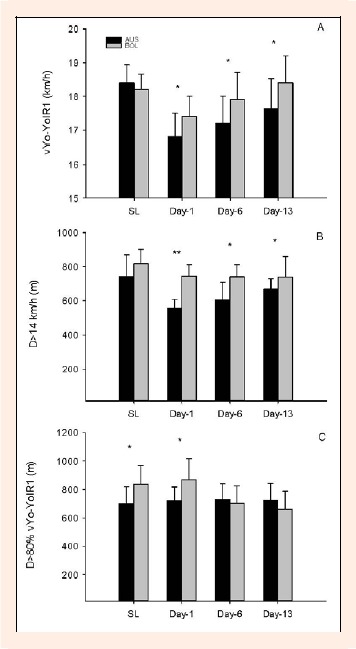
Values are mean with 90% confidence intervals. High-intensity running performance (vYo-YoIR1, A) and distance covered above 14.4 km.h-1 (D>14.4 km·h-1, B) and above 80% of vYo-YoIR1 (D>80% vYo-YoIR1, C) during matches at sea-level (SL) and at altitude (Day-1, Day-6 and Day-13) in the Australian (AUS) and Bolivian (BOL) players. See methods for the exact timing of the different performance measures. The magnitude of between-team difference on each testing/match day is shown by the number of ‘*’ symbols, with 1 and 2 symbols referring to clear moderate and large differences. Note that vYo-YoIR1 values at ALT2 have been interpolated (see methods).
Upon arrival at altitude, there was a greater decrement in both vYo-YoIR1 (very likely, Cohen’s +1.0 90CL ± 0.8) and D>14.4 km·h-1 (possible, +0.5 ± 0.8) in AUS compared with BOL (Figure 1, A and B and Figure 2); however, D>14.4 km·h-1 was reduced by a similar amount relative to vYo-YoIR1 in both groups, so that D>80%vYo-YoIR1 remained similarly unchanged in both groups (unclear, -0.1 ± 0.8, Figure 1, C, and Figure 2). Throughout the camp, there was a gradual increase in vYo-YoIR1 and D>14.4 km·h-1 in AUS, which led to a stable D>80%vYo-YoIR1 (unclear, +6.0%/match, 90CL ± 6.7). In contrast, BOL showed no clear change in D>14.4 km·.h-1, so that D>80%vYo-YoIR1 decreased largely (-12.2%/match ± 6.2).
Figure 2.
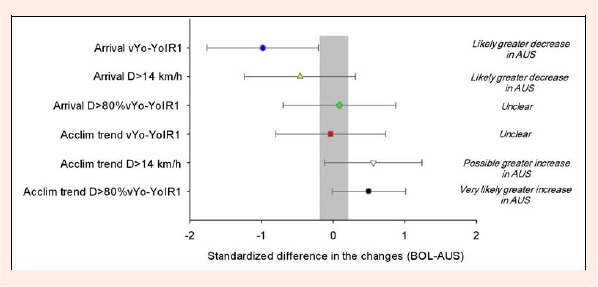
Standardized differences in the change (90% confidence intervals) between Bolivian (BOL) and Australian (AUS) players in high-intensity running performance (vYo-YoIR1) and distance covered above 14.4 km·h-1 (D>14.4 km·h-1) and above 80% of vYo-YoIR1 (D>80% vYo-YoIR1) during matches both upon arrival and throughout the camp (Acclimatization trend).
Discussion
Our data show that in soccer players competing at high-altitude, changes in match running performance upon arrival may mirror those of high-intensity intermittent running performance, irrespective of players’ altitude experience. For instance, the ratio between the changes in vYo-YoIR1 and actual match running performance impairment upon arrival were comparable between each team (Figure 1, A and B); the changes during the first game in relative match intensity were therefore not substantially different between the two teams (Figure 1, C and Figure 2). Throughout the acclimatisation period, the rate of improvement of vYo-YoIR1 and match running performance was similar in the Australian players (Figure 1 A and B), leading to an unchanged relative match intensity (+6.0%/match, 90CL ± 6.7). While limited, given the reduced number of players and games examined, but considering that players rarely use their full capacities during games (Carling, 2013, Mendez-Villanueva et al., 2013), these present data suggest that sea-level natives may regulate their activities during (high-altitude) games to maintain a ‘tolerable’ relative exercise intensity. The observation that changes in fitness (as assessed by vYo-YoIR1) were followed by comparable changes in absolute match running performance is consistent with the data reported in junior soccer players after their pre-season training (Impellizzeri et al., 2006). Our results contrast however with other longitudinal data on young players, where the magnitude of the changes in match running activities tended to be lower than those in fitness (Buchheit et al., 2012). These discrepancies could be related to the actual origin of the changes in fitness (i.e. acutely induced by change on O2 availability vs. training-induced improvements in cardiovascular function) and the period of interest (pre- versus in-season versus short camp). In the aforementioned study in young players (Buchheit et al., 2012), the effect of fitness changes on match running performance were position-dependent, which could not be examined in the present study due to limited sample sizes and reduced number of matches. All players included in the present analysis however played in the same position during all 5 games, and only the first half of the game was analysed, which may reduce the match-to-match variability in the responses (i.e., different pacing strategies can occur in the second half due to tactical adjustments in relation to match scores) (Bradley and Noakes, 2013).
Interestingly, the Bolivian players ran consistently more than the Australian players at altitude (Figure 1, B), but in contrast to the Australians, they showed a stable match running performance throughout the three games. While these differences in match running performance can obviously be related to specific team tactics (i.e., Australians were requested to play conservatively during the first game (Aughey et al., 2013)), the large magnitude of the changes suggests that altitude had likely affected both teams responses. Since their physical capacity (as assessed by vYo-YoIR1) gradually improved with re-acclimatisation, this lead to a progressive reduction in relative match running intensity (Figure 1, C and Figure 2). The possible explanations for the lack of an increase match running performance in the Bolivians, despite their improved fitness, are multiple and remain unclear without additional technical and tactical data. We can nevertheless speculate that since they had to compete against the Australians, who were experiencing a large decrease in their running performance, the Bolivians were probably not required to run as much as they could. These results therefore confirm that increases in ‘fitness’ do not necessarily translate into greater match running performance, but rather in reduced relative exercise intensity (Buchheit et al., 2012, Mendez-Villanueva et al., 2013).
It is however worth noting that the present case report suffers from a couple of limitations, including the limited number of players and matches analysed. For instance, because of the large match-to-match substitutions, we could only use the data from a sub-group of 13 players per match (7 and 6 for each group). Additionally, because of obvious logistical and physiological reasons, only one match was played at each time point at altitude. Because of the substantial match-to-match variability in match running performance (Gregson et al., 2010), the observed trend in match running activity should therefore be viewed with caution. While some physiological measures reflecting the acclimation process of both teams were not reported in the present case report, they were partially in line with the recovery of high-intensity running performance (vYo-YoIR1). For further details, the reader is referred to the companion papers of the present case report (Buchheit et al., 2013, Wachsmuth et al., 2013). Finally, the lack of tactical/technical analyses during matches prevents a comprehensive examination of the effect of altitude on matches outcome; winning in soccer is actually about scoring more goals that the opponent, not about running more per se.
Conclusion
When playing at high-altitude, players may regulate their activities during matches in relation to their transient maximal physical capacities, possibly to maintain a ‘tolerable’ relative exercise intensity. Adjustments in match running performance are also likely to occur to follow that of the opposing team; the fitter team may then end up by running at a relatively lower intensity, but not necessarily by covering more distance.
Acknowledgements
The authors thank the players and coaches for their enthusiastic participation.
Biographies
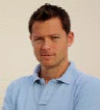
Martin BUCHHEIT
Employment
Sport Science Department, Myorobie Association, Montvalezan, France
Performance Department, Paris Saint Germain FC, Saint-Germian-en-Laye, France.
Degree
PhD
Research interests
Determinants of team sport physical performance, monitoring and progressive statistics
E-mail: mb@martin-buchheit.net
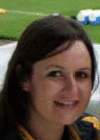
Kristal HAMMOND
Employment
PhD Scholar, Institute of Sport, Exercise and Active Living, Victoria University, Melbourne, Australia
Degree
Bachelor of Applied Science (Hons)
Research interests
Enhancing athletic performance through environmental manipulation
E-mail: kristal.hammond@live.vu.edu.au

Pitre BOURDON
Employment
Sport Science Department, ASPIRE Academy, Doha, Qatar
School of Health Sciences, The University of South Australia, Adelaide, Australia
Degree
PhD
Research interests
Effects of altitude on performance, determination of total haemoglobin mass, adolescent athletes and the physiology of team sports.
E-mail: pitre.bourdon@aspire.qa

Ben M. SIMPSON
Employment
Sport Science Department, ASPIRE Academy, Doha, Qatar
School of Health Sciences, The University of South Australia, Adelaide, Australia
Degree
MsC
Research interests
Adolescent athletes, the physiology of team sports, photography and travelling.
E-mail: ben.simpson3@gmail.com
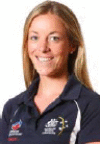
Laura A. Garvican-Lewis
Employment
Department of Physiology, Australian Institute of Sport, Canberra, Australia. University of Canberra, Research Institute for Sport and Exercise, Canberra, Australia
Degree
PhD
Research interests
Environmental physiology, hematological adaptations to training, iron metabolism and anti doping.
E-mail: laura.garvican@gmail.com
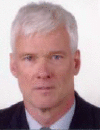
Walter Schmidt
Employment
Department of Sports Medicine / Sports Physiology, University of Bayreuth, Germany
Degree
PhD
Research interests
Cardio-vascular physiology, altitude physiology, endurance performance, anti-doping research
E-mail: walter.schmidt@uni-bayreuth.de

Christopher J. GORE
Employment
Department of Physiology, Australian Institute of Sport, Canberra, Australia
Degree
PhD
Research interests
Altitude training, anti-doping, and measurement precision
E-mail: chris.gore@ausport.gov.au

Robert J. AUGHEY
Employment
Institute of Sport, Exercise and Active Living, Victoria University, Melbourne, Australia
Degree
PhD
E-mail: robert.aughey@vu.edu.au
References
- Aughey R.J., Hammond K., Varley M., Schmidt W.F., Buchheit M., Simpson B. M., Garvican-Lewis L.A., Kley M., Soria R., Sargent C., Roach G. D., Jimenez Claros J. C., Wachsmuth N., Gore C. J. (2013). Soccer activity profile of altitude versus sea-level natives during acclimatisation to 3600 m (ISA3600). British Journal of Sports Medicine 47 Suppl 1:i107-113. [DOI] [PMC free article] [PubMed] [Google Scholar]
- Bangsbo J., Iaia F. M., Krustrup P. (2008). The Yo-Yo intermittent recovery test : a useful tool for evaluation of physical performance in intermittent sports. Sports Medicine 38, 37-51. [DOI] [PubMed] [Google Scholar]
- Bradley P. S., Noakes T. D. (2013). Match running performance fluctuations in elite soccer: indicative of fatigue, pacing or situational influences? Journal of Sports Sciences 31, 1627-1638. [DOI] [PubMed] [Google Scholar]
- Buchheit M., Simpson B. M., Garvican-Lewis L. A., Hammond K., Kley M., Schmidt W. F., Aughey R. J., Soria R., Sargent C., Roach G. D., Jimenez Claros J. C., Wachsmuth N., Gore C. J., Bourdon P. C. (2013). Wellness, fatigue and physical performance acclimatisation to a 2-week soccer camp at 3600 m (ISA3600). British Journal of Sports Medicine 47 Suppl 1i100-i106. [DOI] [PMC free article] [PubMed] [Google Scholar]
- Buchheit M., Simpson B. M., Mendez-Villaneuva A. (2012). Repeated high-speed activities during youth soccer games in relation to changes in maximal sprinting and aerobic speeds. International Journal of Sport Medicine 34, 40-48. [DOI] [PubMed] [Google Scholar]
- Carling C. (2013). Interpreting physical performance in professional soccer match-play: should we be more pragmatic in our approach? Sports Medicine 43, 655-663. [DOI] [PubMed] [Google Scholar]
- Gore C. J., Aughey R. J., Bourdon P. C., Soria R., Jimenez Claros J. C., Garvican-Lewis L. A., Sargent C., Roach G. D., Buchheit M., Simpson B. M., Hammond K., Kley M., Wachsmuth N., Pepper M., Edwards A., Cuenca D., Vidmar T., Spielvogel H., Schmidt W. F. (2013). Methods of the International study on Soccer at Altitude 3600 m (ISA3600). British Journal of Sports Medicine 47 Suppl 1:i80-85. [DOI] [PMC free article] [PubMed] [Google Scholar]
- Gore C. J., McSharry P. E., Hewitt A. J., Saunders P. U. (2008). Preparation for football competition at moderate to high altitude. Scandinavian Journal of Medicine and Science in Sports 18 Suppl 1, 85-95. [DOI] [PubMed] [Google Scholar]
- Gregson W., Drust B., Atkinson G., Salvo V. D. (2010). Match-to-match variability of high-speed activities in premier league soccer. International Journal of Sport Medicine 31, 237-242. [DOI] [PubMed] [Google Scholar]
- Hopkins W. G., Marshall S. W., Batterham A. M., Hanin J. (2009). Progressive statistics for studies in sports medicine and exercise science. Medicince and Science in Sports and Exercise 41, 3-13. [DOI] [PubMed] [Google Scholar]
- Impellizzeri F. M., Marcora S. M., Castagna C., Reilly T., Sassi A., Iaia F. M., Rampinini E. (2006). Physiological and performance effects of generic versus specific aerobic training in soccer players. International Journal of Sport Medicine 27, 483-492. [DOI] [PubMed] [Google Scholar]
- Mendez-Villanueva A., Buchheit M., Simpson B. M., Bourdon P. C. (2013). Match play intensity distribution in youth soccer. International Journal of Sport Medicine 34, 101-110. [DOI] [PubMed] [Google Scholar]
- Rampinini E., Impellizzeri F. M., Castagna C., Azzalin A., Bravo D. F., Wisloff U. (2008). Effect of match-related fatigue on short-passing ability in young soccer players. Medicince and Science in Sports and Exercise 40, 934-942. [DOI] [PubMed] [Google Scholar]
- Sargent C., Schmidt W. F., Aughey R. J., Bourdon P. C., Soria R., Jimenez Claros J. C., Garvican-Lewis L. A., Buchheit M., Simpson B. M., Hammond K., Kley M., Gore C. J., Roach G. D. (2013). The impact of altitude on the sleep of young elite soccer players (ISA3600). British Journal of Sports Medicine 47, i86-i92 . [DOI] [PMC free article] [PubMed] [Google Scholar]
- Wachsmuth N., Kley M., Spielvogel H., Schmidt W., Aughey R. J., Gore C. J., Bourdon P. C., Hammond K., Simpson B. M., Sargent C., Roach G. D., Soria R., Jimenez Claros J. C., Garvican-Lewis L. A. (2013). What goes up, must come down: Changes in blood gas transport and aerobic performance of altitude natives playing near sea level and sea level natives playing at altitude. British Journal of Sports Medicine 47 Suppl 1, i100–i106. [DOI] [PMC free article] [PubMed] [Google Scholar]


